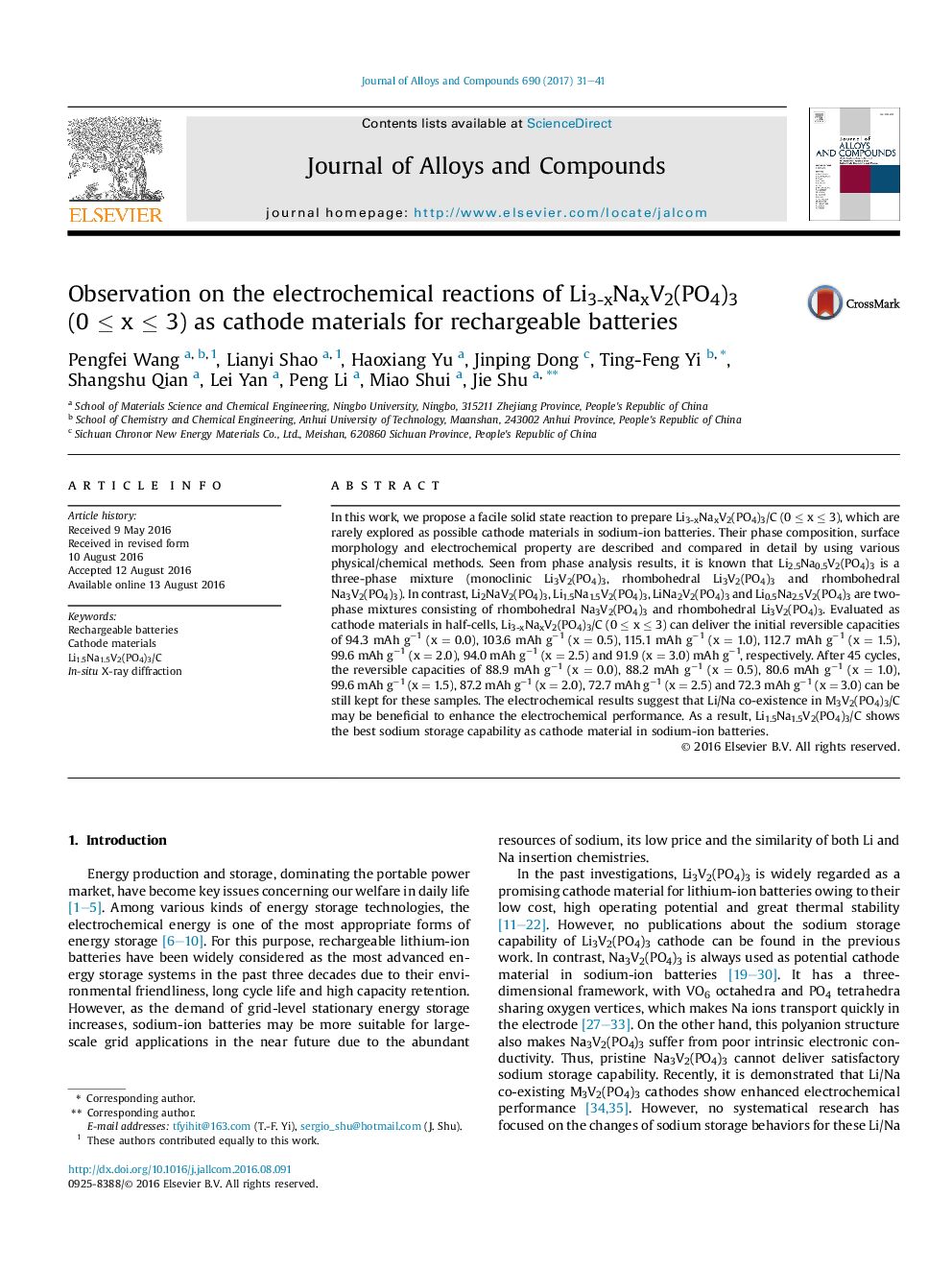| کد مقاله | کد نشریه | سال انتشار | مقاله انگلیسی | نسخه تمام متن |
|---|---|---|---|---|
| 1604889 | 1516204 | 2017 | 11 صفحه PDF | دانلود رایگان |
• Li3-xNaxV2(PO4)3/C are explored as cathode materials in sodium-ion batteries.
• Li1.5Na1.5V2(PO4)3/C shows the best sodium storage capability.
• In-situ XRD is used to observe the structural reversibility of Li1.5Na1.5V2(PO4)3.
In this work, we propose a facile solid state reaction to prepare Li3-xNaxV2(PO4)3/C (0 ≤ x ≤ 3), which are rarely explored as possible cathode materials in sodium-ion batteries. Their phase composition, surface morphology and electrochemical property are described and compared in detail by using various physical/chemical methods. Seen from phase analysis results, it is known that Li2.5Na0.5V2(PO4)3 is a three-phase mixture (monoclinic Li3V2(PO4)3, rhombohedral Li3V2(PO4)3 and rhombohedral Na3V2(PO4)3). In contrast, Li2NaV2(PO4)3, Li1.5Na1.5V2(PO4)3, LiNa2V2(PO4)3 and Li0.5Na2.5V2(PO4)3 are two-phase mixtures consisting of rhombohedral Na3V2(PO4)3 and rhombohedral Li3V2(PO4)3. Evaluated as cathode materials in half-cells, Li3-xNaxV2(PO4)3/C (0 ≤ x ≤ 3) can deliver the initial reversible capacities of 94.3 mAh g−1 (x = 0.0), 103.6 mAh g−1 (x = 0.5), 115.1 mAh g−1 (x = 1.0), 112.7 mAh g−1 (x = 1.5), 99.6 mAh g−1 (x = 2.0), 94.0 mAh g−1 (x = 2.5) and 91.9 (x = 3.0) mAh g−1, respectively. After 45 cycles, the reversible capacities of 88.9 mAh g−1 (x = 0.0), 88.2 mAh g−1 (x = 0.5), 80.6 mAh g−1 (x = 1.0), 99.6 mAh g−1 (x = 1.5), 87.2 mAh g−1 (x = 2.0), 72.7 mAh g−1 (x = 2.5) and 72.3 mAh g−1 (x = 3.0) can be still kept for these samples. The electrochemical results suggest that Li/Na co-existence in M3V2(PO4)3/C may be beneficial to enhance the electrochemical performance. As a result, Li1.5Na1.5V2(PO4)3/C shows the best sodium storage capability as cathode material in sodium-ion batteries.
Figure optionsDownload as PowerPoint slide
Journal: Journal of Alloys and Compounds - Volume 690, 5 January 2017, Pages 31–41
